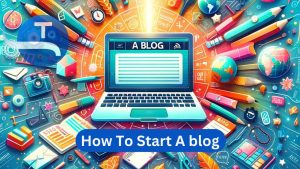How to Publish a Book Like a Pro in 2023
The Ultimate Guide to Publishing 101
Whether you have a completed manuscript or just the idea for a great book, you want to know how to publish a book to get your message out to the world and reap the many benefits of being a published author. The good news is there are more ways than ever to not only get help writing your book or editing your manuscript but also to get it published. Consider this your crash course in Publishing 101.
After reading this article, you’ll have the knowledge you need to wisely choose the right pathway to becoming a published author. Note that the information here applies to a book of any genre, whether it’s non-fiction, creative nonfiction, memoir, or a novel of any type (literary, romance, horror, science fiction, fantasy, mystery, thriller, historical fiction, and so on).
Before You Publish, Here’s the Process of Writing a Book
Publishing your could be viewed as the process of taking your creative work and actually turning it into the reality of a product. But what’s the actual starting point for publishing your book? How do you turn an idea into a finished project ready to be read? These simple steps break down the most efficient way to turn an idea into a bestseller:
- Step One: Start Writing Your Book! Seriously, just start! This is seemingly the hardest part of your entire journey to becoming a published author. Many people never even embark on getting their book published because they simply don’t know where to start, and it seems too daunting to just “dive in”; oftentimes because people lack any sort of strategy or game plan for how to best go about it.
- Step Two: But How Do I Start Writing My Book? Don’t just randomly start with Page 1 and hope to craft a masterpiece from start to finish. It’s much too difficult to just start at Point A and finish perfectly at Point Z. So what we’ve found works for a lot of published authors is to first start with what’s called a “Mind Map”. This is a great way to get what’s frequently referred to as the “30,000 foot view” of your idea, and to take stock of how far along your idea is in its current state, and maybe how much more incubation needs to be done. It’s also a great way to start laying the foundation for the structure of your book before you begin to actually write. What’s involved with creating a Mind Map?
- Step Three: Map Out Your Mind So You Can Map Out Your Book. This might sound strange or disorganized, but it’s a leap of faith in yourself and your idea that you must take in order to begin your journey to publishing your book. First, just pick a room to work, lock the door behind you, turn off all technology, set up a huge white board or an assortment of sticky notes, and then get every single thing about your book out of your head and onto that board! Don’t worry about outlining or organization. It’s supposed to be messy. This is part of the beautiful creative process of creating your book.
- Step Four: See Where You Stand With Your Book. Maybe the Mind Map takes 1-2 hours, give or take. You might have 100-200 ideas in messy circles or sticky notes scattered all over the room. All of these thoughts and ideas will essentially be your book’s assorted subtopics.
- Step Five: Your Book Takes Shape. Once you have all of your Mind Map ideas all out in the open, start to put them together in about 10-20 groups based on how similar they are to each other. These will basically start to form the chapters of your book. Don’t bother putting anything in order yet, however.
- Step Six: The Fun Part: Writing Your Book. Once you have a roadmap of chapters for your book, now you can go about writing. For each chapter, write them out separately in the form of a blog post. Once you’ve accomplished that, the proper order for your chapters usually naturally reveals itself as you flesh out your ideas in this creative process. Alternatively, this is where Ghostwriting Services would come in. A Ghostwriter is someone who can take your idea and actually write the book collaboratively with you.
- Step Seven: Putting the Pages Together. Now that you have a great framework for your book, it’s time to write your conclusion, intro, and then lastly, you will be best equipped to title and subtitle your book.
- Step Eight: Contact Authors Unite. When you do, we’ll need to know:
- What are your goals for your book project?
- What type of book is it?
- Do you have a business tied to the book in some way?
If things are aligned, we’re ready to set up a consult and see if we’re a great fit to publish your book! Just be ready with a rough draft, book cover ideas, and the timeline for your book.
4 Pathways for Publishing a Book
If you’re new to the world of book writing and publishing, understanding how to publish a book can feel like a black box with no way to open it. When experienced authors talk about publishing books, it sounds like they’re speaking a foreign language. Below you’ll find descriptions of the four basic pathways for publishing a book in plain, easy-to-understand English. These four broad methods to publish your book represent a crossroads where you must decide which path to take. But you can also change your mind at any point along the way, at least right up until the point you sign a legally binding publishing contract. Once you sign on the dotted line, you’re fully committed to that publishing path.

Traditional Publishing: Book Publishers Large and Small
Most people who dream of becoming a published author hope they will find a way to get their book accepted by a traditional publisher. They may even hope a traditional publisher will love their book idea so much they’ll get an advance payment to free them up to finish writing the manuscript. A person can dream, right? A substantial advance for a first-time author from a traditional publisher is highly unlikely, if for no other reason than you’re simply an unknown quantity to a big traditional publisher.
There are tons of traditional book publishing companies, but when most people dream of being picked up by a traditional publisher, they may be thinking of one of the “Big 5” publishers, including Penguin Random House, Hachette Livre, HarperCollins, Simon & Schuster, and Macmillan Publishers. Some of those names might not be familiar to you, but you may have heard of some of the major “imprints” of each one. But what is an imprint? As defined by Wikipedia:
“An imprint of a publisher is a trade name under which it publishes a work. A single publishing company may have multiple imprints, often using the different names as brands to market works to various demographic consumer segments.”
Below are the Big 5 publishers and some of their more well-known imprints:
Publishing Houses:
Penguin Random House
Penguin was started back in 1924. In 2013 it acquired Random House and is now the largest traditional book publishing company. Penguin Random House is trying to acquire Big 5 rival Simon & Schuster, but the US Justice Department has sued to block the acquisition. A few of this publisher’s more than 365 imprints include Knopf Doubleday, Crown Publishing, and Viking Press.
Hatchette Livre
This publisher dates back to 1826 and is headquartered in France, and the US division operates as Hatchette Book Group USA. Notable imprints here include Grand Central Publishing (mainly fiction, formerly known as Warner Books), Little, Brown and Company, Mulholland Books (a sub-imprint within Little, Brown and Company) dedicated mostly to publishing mystery novels, and Orbit Books (science fiction and fantasy).
HarperCollins
Created in 1989 with the merging of multiple publishing companies, this one has more than 120 different imprints, including well-known ones such as AvonBooks (romance of all types), Harlequin Enterprises (women’s fiction and romance), Harper (fiction and nonfiction across all genres), and William Morrow.
Simon & Schuster
Founded in 1924, this publisher has around 35 different imprints, the more popular ones being Howard Books, Scribner (Stephen King is often published under Scribner), and Touchstone.
Macmillan Publishers
This company goes back to 1843 and has grown into a Big 5 publisher through mergers with other companies. Among its more than 40 imprints and sub-imprints are Farrar, Straus and Giroux, Picador (literary fiction), and Thomas Dunne Books.
Other Traditional Book Publishers and Presses
Those are just the Big 5 traditional publishers, and while they account for somewhere around 80% of the books published (source) there are many, many more smaller traditional independent publishing companies on the rise, including Graywolf Press, Dorothy, Catapult, New York Tyrant Books, Coffee House Press, Two Dollar Radio, and Tin House. These are presses that aren’t necessarily following the Big 5 playbook, so there’s a higher chance you could get picked up by one.
Why Traditional Publishing May Not Be the Way to Go
As a first-time author, you’re probably more likely to win the lottery or get struck by lightning twice than get picked up by a Big 5 publisher. And even if you do get a big publishing contract, it still may not be the dream you had in mind. First, most of the larger traditional publishing houses don’t even accept unsolicited manuscripts. To have even a glimmer of hope of getting a foot in the door, you must retain the services of a literary agent, which is itself a feat many writers never even accomplish. If you do land a literary agent and end up getting a contract with a traditional publisher, both the agent and the publisher are going to take their slice of every book sold, leaving you with very little if anything if your book doesn’t sell thousands of copies. The traditional publisher also may not provide nearly as much marketing for the book as you assumed they would.
The Hard Truths About Traditional Publishing
When a traditional publisher agrees to accept the book, the contract the author signs will spell out what royalties they will receive, expressed as a percentage of the sale price of the book. The typical royalty rate often falls in the range of only 8–10%, and the publisher will continue to take that gigantic 90+% slice of every book sale in perpetuity. This is how the publisher covers the up-front costs they invested into producing your book.
The gamble they’re taking on you, the author, is that enough copies of your book will sell so they can cover the costs and then make a profit. If you received an advance, you won’t see any royalties at all until you’ve “earned out” of that advance. The advance, in case you didn’t know, was not free money. It was an advance against your book royalties generated by sales, and the publisher will recoup every penny of that advance before you see any royalty payments. Oh, and if you had to hire a literary agent to get your book accepted by a traditional publisher, the agent is also going to get whatever commission was agreed upon, typically around 15% of the royalties you get from the publisher for each book sold.
As an example of how this math works, let’s say you have a novel that sells for $20 a copy, your royalty is a “generous” 10% or $2 per book sold. Let’s also say your book has sold enough copies that you’ve “earned out” of whatever advance you received (if you even received one). Now you’re all set to start raking in $2 per book sold, right? Nope. Remember, your literary agent gets 15% of every royalty you earn, so you’ll only end up getting $1.70 per book sold. Ouch. If you become a wildly successful author and sell thousands and thousands of books, that will add up over time. For most new authors? Not so much.
Self-Publishing in the Digital Era of the 21st Century
Becoming a published author is easier than ever if you go the “indie author” route of self-publishing thanks to Amazon introducing its self-publishing platform. Add in other self-publishing platforms like IngramSpark and Kobo and you can get your book out there, although you still have the challenge of needing to do all your own marketing (just because it’s “out there” doesn’t mean anyone is going to find it).
Can Self-Publishing Lead to Success? Sure, Occasionally…
It’s quite rare for a self-published author to find big success, though it does sometimes happen. One example is Andy Weir’s book, The Martian. He was sharing chapters of it on his website and his fans said he should make it available on Kindle. He self-published the Kindle version and it sold 35,000 in three months. Publishers took note and it was picked up by Crown Publishing, which you now know is an imprint of Penguin Random House. It debuted on the New York Times bestseller list and was also adapted into a blockbuster film starring Matt Damon. This is a case of a self-published book being picked up by a traditional publisher.
Other examples of books that followed a similar pattern of first being self-published and then eventually getting picked up by a traditional publisher and even getting movie deals include Fifty Shades of Gray by E. L. James, The Celestine Prophecy by James Redfield, Still Alice by Lisa Genova, and Eragon by Christopher Paolini.
What the SELF in Self-Publishing Means: You!
The thing you must keep in mind with self-publishing is that you will have to figure out all the details on your own around editing your manuscript, formatting the interior layout to meet each publishing platform’s specifications, creating an eye-catching cover design, and so on. If you don’t have the skills to do these things yourself, then you’ll have to find and hire people to do them for you.
Yes, all these services you need can easily be fulfilled by freelancers you can find on any number of freelance marketplace websites like Upwork, Fiverr, and so on. If you want a quality book, then skilled services in each area are going to cost you. You can always find a freelancer who will do any given book production task for surprisingly little money, but the quality of the final product will likely be quite disappointing. If you want a book to be proud of, you’ll need to spend at least $3,000–$5,000 minimum for decent paperback and eBook results, if you’re lucky.
You see, the inherent danger in self-publishing is cutting corners on book production to minimize your up-front, out-of-pocket expenses, but you end up shooting yourself in the foot when you do this. Read our article, 3 Biggest Mistakes New Authors Make. Spoiler alert, they are 1) not using a professional editor, 2) doing the cover themselves, and 3) not having a marketing and launch plan. If you’ve got mad skills or the time to learn everything you need to know to take on book production yourself, more power to you! Most people who decide they want to become a published author do not have the skills to do any of it themselves, or the time to learn how to do all the different tasks involved.
The learning point here is that every author does in fact pay for the cost of book production. It’s only a matter of how much and when they pay for it. In self-publishing, it’s up-front to get the book production services you need. With a traditional publisher, it’s on the back end of the process after your book is published and they take most of the money from each copy sold well beyond recouping their costs and overhead. Still interested in self-publishing your book? Learn more about it in our article, How to Self-Publish a Book.
Vanity Publishing
Very little time needs to be spent on this one. This is for writers who want to become published authors and will just pay the vanity publisher up-front all the money needed for book production costs. The vanity press isn’t concerned about the book having any kind wide distribution because the market for a vanity press isn’t the book-reading public, it’s the writer who wants to see their book in print and is willing to just pay to make it happen.
The vanity press doesn’t care about whether the book is any good or not because they make most of their money on the up-front fees paid by the author to get their book published, not on the back end through sales of the book. Vanity presses are often frowned upon by the rest of the publishing industry because of a general lack of any editorial standards.
Hybrid Publishing: The New Kid on the Block
This is a more recent development in the book publishing industry, and it’s especially well-suited to first-time authors if it’s a legitimate operation. With a good hybrid publisher, writers pay up-front to have the publishing company arrange for all the services needed to produce the book and help the writer become a published author. The difference between a hybrid publisher and a vanity press is that the hybrid publisher does have editorial standards and understands that customer satisfaction requires them to help the writer arrive at a high-quality final book.
A reputable hybrid publisher, unlike a traditional publisher, will not retain an ownership interest in the book once it’s published. This means the author will keep all the royalties earned through the various platforms the book is made available (Amazon, IngramSpark, Barnes & Noble, and so on). Many hybrid publishers also offer marketing and publicity services the author can pay for to help market the book. Hybrid publishing is a more accessible publishing path for new and unknown authors to get published while retaining full ownership and control of the rights to their book, which means it could still get picked up by a traditional publisher if it does well enough to catch their attention, just like in self-publishing.
Authors Unite is a Hybrid Publishing Company
If you’ve been wondering how to publish a book and like the idea of hybrid publishing because you know you need help with book production (writing, editing, interior design, book cover, publishing support, and so on) and/or marketing and publicity, we invite you to take a closer look at what we do here at Authors Unite. It might also be helpful to explore the pros and cons of Self-Publishing vs. Traditional Publishing to get some additional perspective on why hybrid publishing as an alternative to both those publishing paths is on the rise. Authors Unite can help you with any book-related tasks, and you always retain 100% of all royalties earned and 100% control of your book. Services we offer include the following:
Authors Unite Publishing Services:
Publishing:
Let us bring our expertise to the table to publish your book, including cover design, interior layout/design, paperback and eBook formats, publishing details (ISBN, Amazon book page setup, Amazon author page setup, etc.), as well as printing and distribution through major online retailers.
Writing + Publishing:
Have a great book idea but can’t do the writing yourself? Don’t let that stop you from realizing your dream of becoming a published author. Check out our No-Risk Ghostwriting service.
Editing +Publishing:
If your rough draft manuscript needs editing before we help you get it published, we’ve got fantastic editors ready to help! From bigger-picture feedback down to line editing, copyediting, and proofreading, we’ll polish your manuscript and make it shine.
Book Marketing:
We offer three different levels of services to successfully launch your book into the marketplace, including basic Book Launch, Book Launch+, and Full Distribution Launch. Each level has its own strategy for marketing your book. You can check out some results here: https://authorsunite.com/best-sellers/. There are also three different Rapid Media packages to pursue high-impact media outlets. We’ve had past clients get coverage with outlets such as Fox News, Good Morning America, the Wall Street Journal, USA Today, CBS, ABC, NBC, Forbes, Huffington Post, Entrepreneur, Fast Company, Fortune, Business Insider, Newsmax, Inc., and others. This kind of exposure turbocharges book sales!
Ready to dive in? Go to the Authors Unite Apply Now page. Answer the questions on the application and you’ll be contacted within 48 hours by a member of the Authors Unite team to discuss the details of your publishing path!


